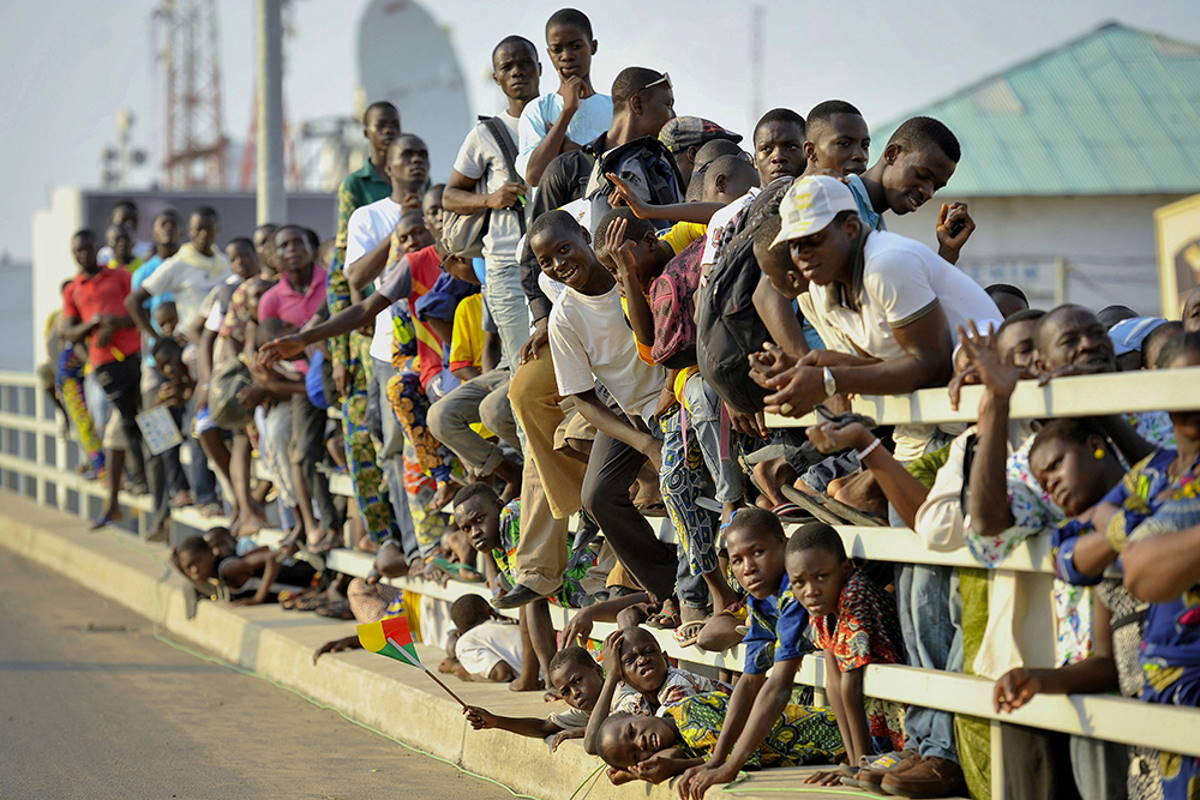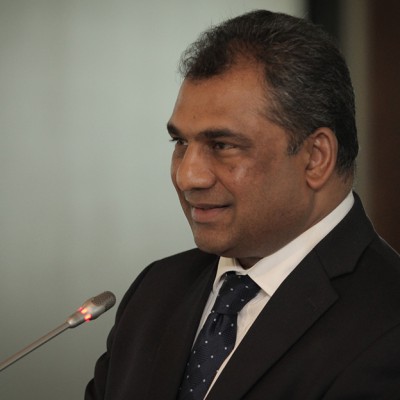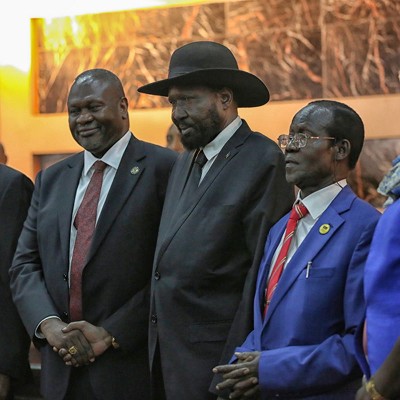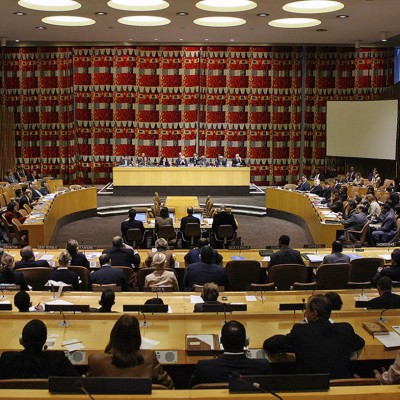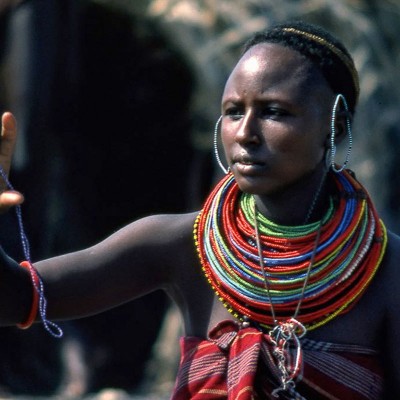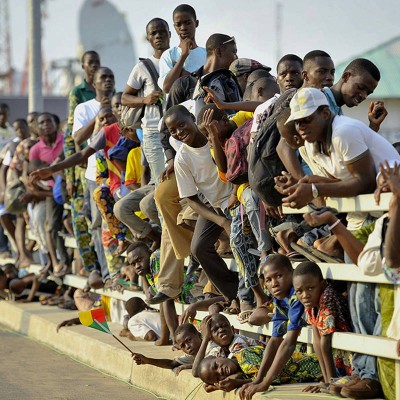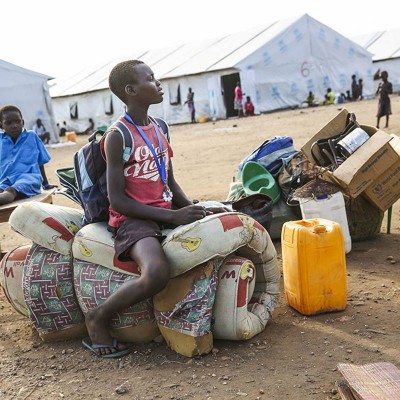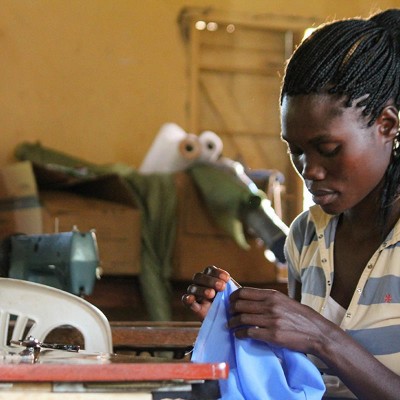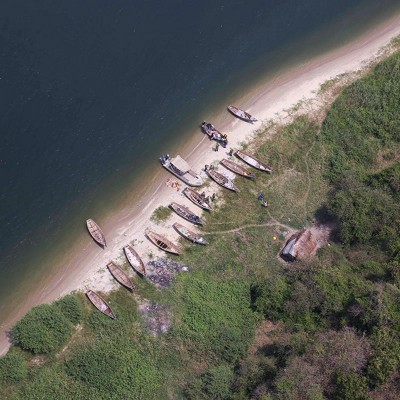Introduction
Young people constitute the biggest proportion of the African population, and are the most affected demographic group in any country’s socio-economic and political developments. By 2019, almost 60% of Africa’s population was estimated to be under the age of 25 years, making Africa the world’s youngest continent.1 According to United Nations (UN) demographic projections, the median age in Africa in 2020 is 19.8 years.2 Almost 16 million young Africans – around 13.4% of the total labour force of 15–24-year-olds – are unemployed, more than 40% of young Africans consider their current living situation to be very bad or fairly bad, and 60% of Africans (especially youth) think that their governments are doing a very bad or fairly bad job at addressing the needs of young people.3 Young people are not represented well and are marginalised and excluded from development processes in many African countries. This pushes them to participate in demonstrations as they try to change political systems that are perceived to be incompetent and responsible for the daily suffering of people. These demonstrations have challenged institutions of power, but their influence has failed to go beyond post-protest governments and development. This article provides an overview of some of the causes and achievements of youth-led demonstrations in many parts of Africa since the Arab Spring in 2010. It also highlights several lessons from the recent developments that occurred in Sudan in 2019, where protests gave rise to a coalition government with the military and a roadmap to a civilian government through elections in three years.
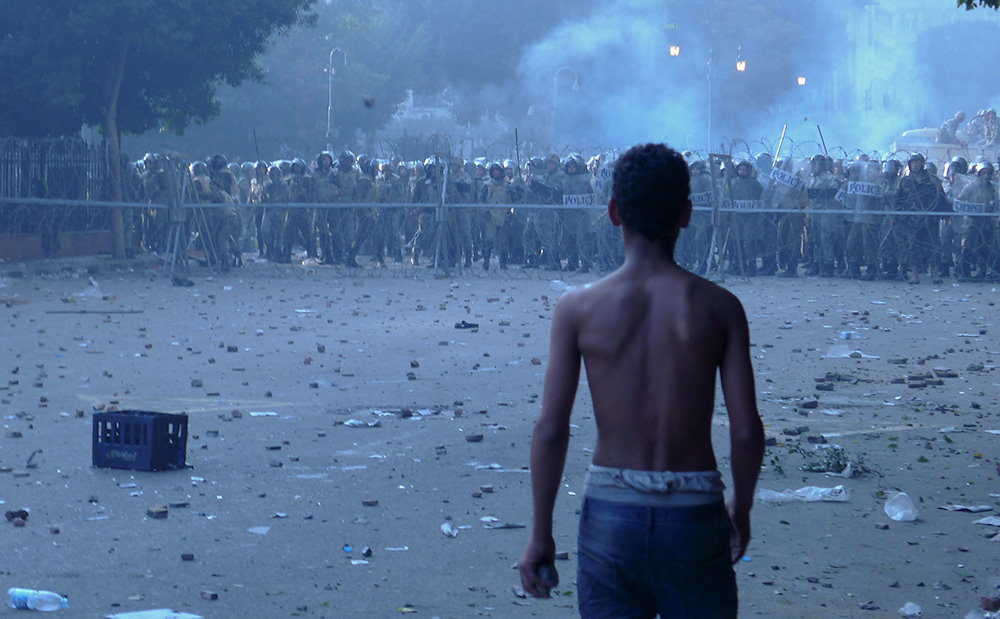
Conceptualisation
There is no single and commonly agreed definition for youth or young people. Different sources have different perceptions of the definition of young people based on understanding, experiences and purposes. For example, the African Youth Charter defines youth as those people between the ages of 15 and 35 years, while the UN defines youth as those between the ages of 15 and 24 years.4 Various scholars and social scientists have also provided varied definitions for youth, based on it being understood as a social construct that depends on societal identities, norms, values and relations. A general appreciation of the definitions, however, shows that youth refers to those people in a transitional phase from childhood to adulthood who can be defined according to the community beliefs and socio-economic realities that shape society. In this article, youth refers to young people in Africa between the ages of 15 and 35 years, as defined by the African Youth Charter.
Coming up with a complete definition for “demonstrations” is also a difficult task, since the term is widely used in different contexts. Casquete defines demonstrations as a collective gathering in a public space whose aim is to exert political, social and/or cultural influence on authorities, public opinion and participants through the disciplined and peaceful expression of an opinion or demand.5 He explains that demonstrations are therefore a moment for productive, creative unrest in the areas of life they target, and they are a form of contention performed by social movements aimed at exerting politics of influence both on the authorities (legislative, executive and judiciary bodies, as well as established political actors) and on that diffuse sphere composed of individuals and groups commonly referred to as public opinion. This is quite a comprehensive definition and explanation of what makes up a demonstration, its purpose and its targeted respondents. Protests, on the other hand, are activities that occur when people want policymakers to address pressing social, economic or political concerns in a timely fashion.6 Thus, in this article, the term “protest” can be used to refer to youth demonstrations that also include strikes, sit-ins, civil disobedience and petitions. These mass demonstrations have stood the test of time. They remain effective in pushing for change and have gained popularity among youth movements in Africa in the past decade.

Recent Trends in Youth Demonstrations in Africa
Since the Arab Spring,7 many young people in different countries in Africa have demonstrated against dictatorships, the extension of presidential term limits, the lack of transparency during elections and unpopular socio-economic policies. In many of these protests, youth movements have managed to gain considerable success in removing political leaders and effecting policy change, but they have failed to bring systematic political, social and economic change because of a lack of influence in post-protest politics and government. However, in Sudan, following the fall of Omar al-Bashir in April 2019, protests led to the formation of a coalition government with the military, and a roadmap for a civilian government through elections. Influencing post-protest politics and development has been difficult for many protest movements in Africa over the last decade. The Sudanese experience can be viewed as a step forward by a protest movement to influencing post-protest politics and development by achieving the will of the people and the primary objective of ending dictatorship and creating a new Sudan with a democratic government, this can also lead to political and socio-economic development.
Young people have been on the forefront during demonstrations in Africa for decades. Since the Arab Spring, youth movements have been leading demonstrations across Africa against dictatorship in countries such as Tunisia, Egypt, Burkina Faso, Senegal and Sudan. These movements marked the end of the long-term leadership of presidents Zine El Abidine Ben Ali, Muhammad Hosni El Sayed Mubarak, Blaise Compaoré, Abdoulaye Wade and Bashir respectively. In some countries, such as the Democratic Republic of the Congo (DRC) and Burundi, young people have demonstrated against proposals to make constitutional amendments to extend presidential term limits by leaders including Joseph Kabila in the DRC, Alpha Condé in Guinea, Pierre Nkurunziza in Burundi and Compaoré in Burkina Faso. In South Africa, youth protested against an increase in university fees under the #FeesMustFall movement. There were also protests against austerity measures in Sudan and the high cost of living in 2018, which later became anti-government protests against Bashir. Such protests against poor economic policies and political decisions by governments are common in many African countries. Protest movements are popular in urban areas, particularly in capital cities, as a considerable number of youth are now concentrated in urban centres where they are experiencing various socio-economic challenges, such as unemployment and a high cost of living. These youth in cities are easier to mobilise, and the majority have access to the internet and social media.

The growing upsurge of youth protests, crystallised in the word “enough!”, must be understood in the context of this generation’s struggles for political, social and economic emancipation.8 Young people in Africa are the most affected by unemployment and underemployment and they are struggling to survive. They are poor and are stuck in “waithood” – defined by Honwana as a prolonged period of suspension in which people’s access to social adulthood is delayed or denied. Whatever their class or background, many youth cannot afford to form families and households and are unable to become fully independent and partake in the privileges and responsibilities of adult life. Apart from material deprivation, “waithood” is also marked by political marginalisation, a lack of voice and a loss of dignity.9 Young people have attempted to escape this trap through other strategies, such as venturing into the informal economy, migrating to other countries or becoming involved in criminal activities. Some even join extremist groups such as Al-Shabaab and Boko Haram, among others, as a way to survive.
Despite the existence of several platforms for participation and the expression of discontent – such as forming or joining political parties and participating in local elections, or forming civil society organisations – youth in Africa have resorted to demonstrations as an effective way of expressing their views on various issues. This is likely because other platforms are not as effective as protests – they do not produce instant results, or the youth are manipulated or captured. This may explain why young people, regardless of their numbers, in many cases do not participate in processes such as elections, either as candidates or voters. They feel marginalised and unrepresented and have suffered the most from the outcomes of elections without any considerable change to their life. It is very difficult for many youth in Africa to join political parties and influence systems of power, because they lack the capacity that is usually determined by wealth and status. The structural barriers in political parties are also not easy to overcome. In addition, voting may have lost its perceived value as a democratic right among young Africans due to a record of lack of credibility with the electoral process. This has often resulted in both pre- and post-election violence. Ikomu is of the view that attending protests, joining a civil society campaign or using social media to share an opinion on a particular policy tend to be more inclusive for the youth, as these are more horizontal, more transparent and more invested in identifying specific problems affecting the demographic than traditional political channels. She is also of the view that political parties are highly hierarchal and structural, making it hard for young people to fully take advantage of this institution. Challenges such as the high cost of party politics, the preference of party loyalists over competent individuals and limited technical expertise among youth limit participation and dampen interests, even where political parties have youth wings.10
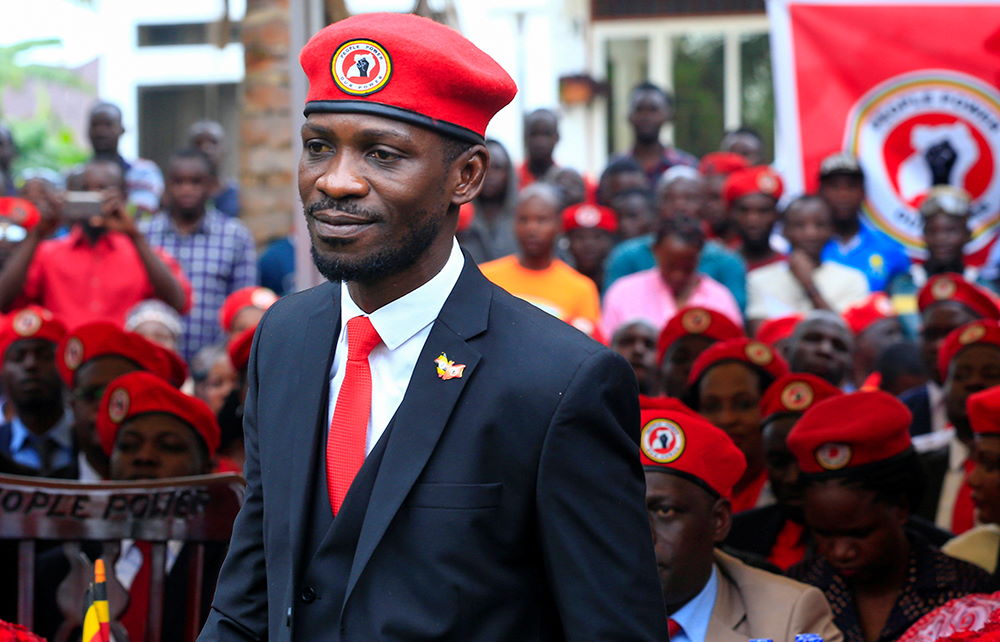
The youth utilise the internet and social media for mobilisation and organising activities. They support each other during protests through blogging and popular social media platforms such as Twitter, Facebook, WhatsApp and Instagram. Popular youth-led groups such as Y’en a Marre (Fed Up)11 of Senegal, Le Balai Citoyen (The Citizen’s Broom)12 of Burkina Faso, the #FeesMustFall movement13 of South Africa and the Forces of Freedom and Change14 of Sudan have also become popular movements spearheading demonstrations. Young people, such as Fou Malade and Aliou Sane of Y’en a Marre and Robert “Bobi Wine” Kyagulanyi Ssentamu (a musician, activist and politician from Uganda), have become inspirations during demonstrations. These young leaders have been leading street protests, marches and rallies that have inspired the youth to unite and speak with one voice.
However, as Honwana observed, youth demonstrations have not allowed young people to directly influence the post-protest governments. Even young activists struggle to translate the political grievances of protest movements into a broader political agenda.15 It is a challenge for most of these protests to maintain their momentum and establish long-lasting solutions for their initial purpose and objectives. This can be attributed to the fact that most youth movements are built out of discontent, and are developed and coordinated from the streets and with little resources. Hence, they are not strong enough to challenge and disentangle long-established systems – which, in most cases, are made up of revolutionary political parties that fought for independence and have been around for a long time. Such political systems are well resourced, coordinated and have influence in many local, regional and international institutions; hence, the youth are easily infiltrated and manipulated, and cannot remain active in the streets indefinitely. In most cases, such youth protests are dispersed through forceful means, which includes police and military brutality.
Lessons from the 2019 Sudan Protests
In Sudan, protests began in December 2018 due to price increases of basic needs such as bread and fuel and the impact of austerity measures on the economy. The demonstrations gained momentum across the country and by April 2019, protesters pushed for a change in government. This resulted in the fall of Bashir, the long-standing president who had been in power for 30 years, on 11 April 2019. He was removed with support from the military. Following this, a Transitional Military Council took power, but protesters continued to demonstrate demanding for a civilian democracy. This led to the creation of the Sovereignty Council of Sudan, which includes members of the protest movement (Forces of Freedom and Change) and members of the Transitional Military Council. The Sovereignty Council of Sudan took over leadership of the country on 4 August 2019 and a draft constitution was formulated that disbanded the old political system and established a roadmap to the next election in three years. What has been achieved in Sudan, through demonstrations that forced the military to form a coalition government with protest leaders and maintaining a strong protest movement that continued to call for a civilian government, has been difficult to achieve for many youth protest movements in Africa. This is a milestone accomplishment in influencing post-protest politics and development. There is therefore a need to understand some of the dynamics that have brought such success in Sudan in this regard.
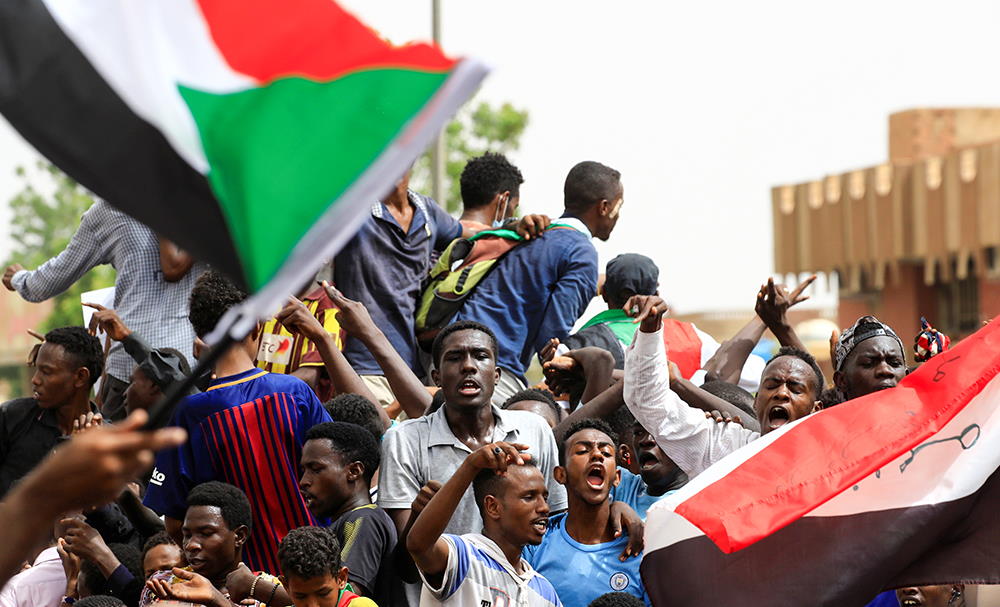
One key lesson was the ability of the protest movement to remain resolute in the face of persecution and to maintain the objectives of the revolution. In most African situations, the military is called on to maintain peace and order, but they eventually serve the interests of political elites in government or within the army ranks. The military usually forces people off the streets and they use excessive force, including live ammunition, in most cases. This occurred in Sudan many times – most notably during the crackdown on 3 June 2019, when the Rapid Support Forces killed dozens of protesters.16 But the voice of the people was far more powerful. The protesters were determined to change the political system. They regrouped and endured military brutality. After days of non-stop protests, they gained international support and the military was forced to give in to their demands for a civilian government, which led to the formation of the Sovereignty Council of Sudan. Youth movements do hold power. Maintaining momentum and uniting to achieve the objectives of the revolution, even in the face of massive police and military oppression, requires having a clear ideology, plan and leadership.
Another important lesson is that the involvement and participation of women in demonstrations is key. In Sudan, women played a very important role in the demonstrations. They had been oppressed under the leadership of Bashir, and they took the opportunity to demand equal rights for all in a new Sudan. Women were inspired to take a leading role during demonstrations – and this harnessing of the power of women was the advantage of the youth protest in Sudan. Women are an important resource, both in terms of numbers and ideas for change. However, their participation during protests is often limited as men usually dominate protest planning – from coordination and mobilisation to giving speeches during the protests. In some cases, safety is an issue, as demonstrations can be more physical and violent and there have been reports of rape and sexual harassment. As a result, women fail to participate or are not encouraged to participate. In the recent Sudanese protests, however, young women such as Alaa Salah became prominent leaders. Women not only participated in Sudan but also showed that they can lead during political demonstrations. Youth movements should encourage the participation of women to take leadership roles during mass action to bring about change.

The use of non-violent ways of demonstration is also powerful. Protesters in Sudan spent almost a week occupying the square in front of the military headquarters, demanding that the military force Bashir out of office. Victory does not always come from destructive action such as the burning of buildings and property or blocking major highways – victory can be achieved through non-violent marches and demonstrations. Youth movements should try to implement more non-violent ways of protesting, such as sit-ins, strikes, stayaways and peaceful marches.
It is also important to be innovative in mobilising and passing on information during protests and not to rely solely on the internet – in most cases when governments feel threatened by protests, they disconnect the internet, which has become the popular medium of communication during protests, especially with the youth. This is a common phenomenon in many African countries. However, in Sudan, even without the internet, protests were well advertised through graffiti and megaphones. Youth movements should therefore come up with varied ways of communicating that do not depend only on electronic communication and social media platforms, as this is often severed by governments in times of crises.
Protest movements can also try to win the support of major security institutions, especially the military. In Sudan, the military was instrumental in removing Bashir from power. The military is a very important decision-maker and major stakeholder in power politics in Africa. For youth movements to be able to influence the politics of power, even after the fall of elites, they need to have a strong connection with key people in the military.
Conclusion
In conclusion, it is noted that protests have become a popular way of youth participation in politics among the younger generation in Africa. It is difficult for demonstrations to influence post-protest politics and developments. However, recent developments in Sudan following the fall of Bashir have shown the determination by youth movements to bring about complete and long-lasting political change and development. Other youth movements interested in influencing change can draw some lessons from the Sudanese experience.
Endnotes
- Mo Ibrahim Foundation (2019) ‘2019 Ibrahim Forum Report. Africa’s Youth: Jobs or Migration. Demography, Economic Prospects and Mobility’, Available at: <https://Ibrahim.foundation/iiag/downloads/> [Accessed 20 April 2020].
- United Nations Department for Economic and Social Affairs (UNDESA) (2017) ‘World Population Prospects’, Available at: <https://population.un.org/wpp/Download/standard/population/> [Accessed 20 April 2020].
- Mo Ibrahim Foundation (2020) ‘Africa’s First Challenge: The Youth Bulge Stuck in Waithood’, Available at: <https://mo.ibrahim.foundation/news/2019/africa’s-first-challenge-youth-bulge-stuck-waithood> [Accessed 20 April 2020].
- Eze, Kevin (2015) Youth Participation in Governance in Africa. Discussion paper for the Mandela Institute for Development Studies Annual African Youth Dialogue 2015.
- Casquete, Jesus (2006) The Power of Demonstrations. Social Movement Studies, 5 (1), pp. 45–60.
- Resnick, Danielle and Casale, Daniela (2011) The Political Participation of Africa’s Youth: Turnout, Partisanship, and Protest. Afro Barometer Working Paper No. 136.
- The Arab Spring was a wave of pro-democracy protests that began in 2011, which affected several Muslim countries including Tunisia, Morocco, Libya and Egypt.
- Honwana, Alcinda (2015) ‘Enough! Will Youth Protests Drive Social Change in Africa?’, Available at: <https://africanarguments.org/2015/12/07/enough-will-youth-protests-drive-social-change-in-africa> [Accessed 15 April 2020].
- Honwana, Alcinda (2019) ‘Are Global Youth Protests Learning from the Arab Spring?’, Available at: <https://blogs.lse.ac.uk/africaatlse2019/11/25/global-youth-protests-lessons-arab-spring> [Accessed 15 April 2020].
- Ikomu, Irene (2019) ‘Youth Movements are Defining what Democracy Looks Like for Young People’, Available at: <https://www.movedemocracy.org/wp-content/uploads/2019/08/challenging-the-narrative-irene-ikomu>
- Y’en a Marre (Fed Up) is a group of young people founded by rappers and journalists in Senegal in 2011 to protest against poor governance and to mobilise young people to vote during elections.
- Le Balai Citoyen (The Citizen’s Broom) is a youth political grassroots movement in Burkina Faso that organises protests and rallies against poor governance and in support of citizen movements.
- #FeesMustFall was a student-led protest movement in South Africa in 2015 that led protests against an increase in student university fees and to demand government funding for university education across South Africa.
- The Forces of Freedom and Change is a political coalition of various political and civil society groups that was created during the 2019 revolution to lead protests and negotiations on behalf of ordinary people and professionals in Sudan.
- Honwana, Alcinda (2013) Youth and Revolution in Tunisia: London: Zed Books, pp. 120–130.
- Burke, Jason and Salih, Mohammed Zeinab (2019) Crowds Gather in Khartoum and Other Cities after Deaths of Over 120 Peaceful Demonstrators’, Available at: <https://www.theguardian.com/world/2019/july/13/sudanese-protesters-demand-justice-after-mass-killings> [Accessed 22 April 2020].

